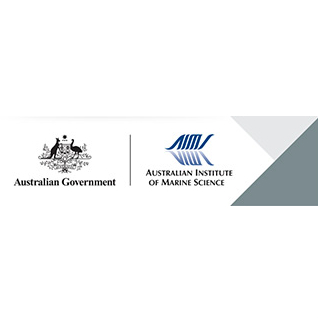Brief description
Three pairs of river systems in north Queensland were chosen for fish sampling. Each pair was comprised of one river open to commercial net fishing and one which had been closed to commercial net fishing for at least 5 years. The river systems were also matched on the basis of the physical characteristics of their catchments: area of catchment/length of main channel; land elevations; direction of river course with respect to the coast; land use and extent of native riparian habitat; extent and characteristics of mangrove wetlands; and geographic region. The paired river systems selected were: the Russell River (closed) and the Hull River (open); the Haughton River (closed) and Barrattas (open); and Yellow Gin Creek (closed) and Nobbies Inlet (open). Sampling was undertaken every 2 months between March 1998 and March 2000, over a period of 7 days within the period of weakest neap tides (0.5-1.8 m range). Sampling sites were selected both upstream (5 to 10 km from the mouth) and downstream (within 1 km of the mouth) in each river system. In each system, two identical/replicate groups of monofilament gill nets were deployed simultaneously at upstream and downstream sites. Each group consisted of two identical 102 mm and 152 mm mesh nets, together with a single 51 mm mesh net and a smaller mesh multi-panel net, which consisted of panels of 19 mm, 25 mm and 32 mm mesh joined end to end to make one continuous net.Replicate 102 and 152 mm mesh nets were set at approximately 15:00 h at fixed locations, perpendicular to deep, eroded banks. Nets were checked hourly and allowed to fish to approximately 21:00 h. The 51 mm and multi-panel nets were set for 1 h either side of dusk, to avoid excessively large catches of schooling baitfishes. Catches were recorded on each net check by species, size and abundance and live fish were released. Dead fish and unknown species were retained for later analysis in the laboratory. Length/weight relationships were calculated for each species from laboratory specimens.During the first year of sampling, a HYDROLAB datasond 3 datalogger was deployed at the downstream site of each river during the net-soak period. Water temperature, salinity, dissolved oxygen, pH and water level were recorded at 5 minute intervals. During the second year, dataloggers were deployed at both the upstream and downstream sites. In this fishery-independent study, the effects of net fishing on fish species diversity, abundance and size was examined through intensive sampling of areas closed and open to commercial net fishing in mangrove dominated estuaries.This research was a component of a larger project (FRDC Project No. 97/206): "The effects of net fishing: addressing biodiversity and bycatch issues in Queensland inshore waters". These data are also used in the publications:Ley JA (2005) Linking fish assemblages and attributes of mangrove estuaries in tropical Australia: criteria for regional marine reserves. Marine Ecology Progress Series 305: 41-57Ley JA and Halliday IA (2007) Diel variation in mangrove fish abundances and trophic guilds of northeastern Australian estuaries with a proposed trophodynamic model. Bulletin of Marine Science: 80(3) 681-720.Lineage
Maintenance and Update Frequency: notPlannedNotes
CreditLey, Janet A, Dr (Principal Investigator)
Modified: 23 06 2025
text: westlimit=146.074005; southlimit=-17.992373; eastlimit=146.074005; northlimit=-17.992373
text: westlimit=145.968348; southlimit=-17.224738; eastlimit=145.968348; northlimit=-17.224738
text: westlimit=147.25167; southlimit=-19.435146; eastlimit=147.25167; northlimit=-19.435146
text: westlimit=147.128128; southlimit=-19.407579; eastlimit=147.128128; northlimit=-19.407579
text: westlimit=147.582892; southlimit=-19.723489; eastlimit=147.582892; northlimit=-19.723489
text: westlimit=147.769593; southlimit=-19.83322; eastlimit=147.769593; northlimit=-19.83322
The effects of net fishing : addressing biodiversity and bycatch issues in Queensland inshore waters: Halliday I, Ley JA, Tobin AJ, Garrett RN, Gribble NA and Meyer D (2001) The effects of net fishing : addressing biodiversity and bycatch issues in Queensland inshore waters. FRDC Project No. 97/206. Fisheries Research and Development Corporation and Department of Primary Industries, Queensland. 95 p.
local : 11068/6483
A Key Role for Marine Protected Areas in Sustaining a Regional Fishery for Barramundi Lates calcarifer in Mangrove-Dominated Estuaries? Evidence from Northern Australia: Ley JA and Halliday I (2004) A Key Role for Marine Protected Areas in Sustaining a Regional Fishery for Barramundi Lates calcarifer in Mangrove-Dominated Estuaries? Evidence from Northern Australia. pp. 225-236. Brooke Shipley J Aquatic protected areas as fisheries management tools. American Fisheries Society Symposium vol. 42. American Fisheries Society
local : 11068/7071
Ecosystem effects of fishing closures in mangrove estuaries of tropical Australia: Ley JA, Halliday I, Tobin AJ, Garrett RN and Gribble NA (2002) Ecosystem effects of fishing closures in mangrove estuaries of tropical Australia. Marine Ecology Progress Series. 245: 223-238.
local : 11068/6433
Map
uri :
https://data.aims.gov.au/mestmapkml/710e56a4-47c5-4126-b163-d12cd37ce973.kml![]()
- global : 710e56a4-47c5-4126-b163-d12cd37ce973


